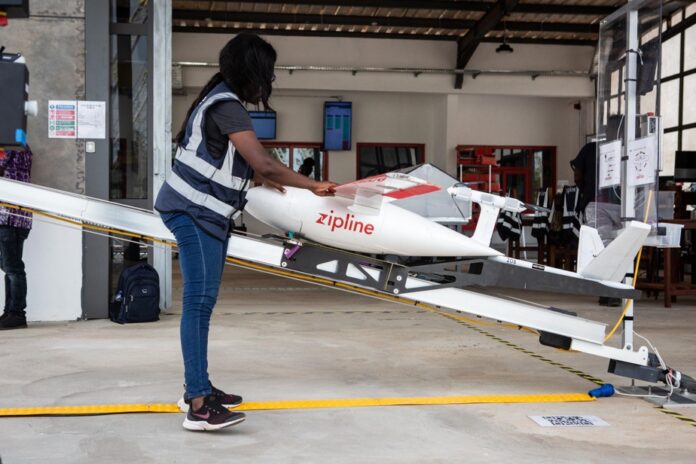(San Francisco) Zipline, a specialist in drone parcel delivery, presented a new device on Wednesday that makes it possible to deliver in denser cities than hitherto, and therefore, eventually, to reach many more markets.
The new drone, P2, has propellers that allow it to come to rest in mid-air.
Once at its destination, it releases another device, dubbed “droid”, a kind of mini drone with propellers which contains the package to be delivered, and is able to land and take off vertically.
The American company hopes to achieve “very quiet and very precise deliveries, even in the event of strong winds, even when the wind tears the leaves off the trees”, explained to AFP Joseph Mardall, the director of engineering.
“You won’t even notice we’re there, and that’s the key to our success, being invisible,” he added.
The existing model, P1, which will continue to be used, has only one fixed wing, and must therefore drop the package, attached to a parachute.
It requires a landing area equivalent to two parking spaces, against the surface of a picnic table for the P2 with its “droid”.
The new system is also faster, but it delivers in a more limited radius, 16 km instead of 90 km.
Zipline plans to complete more than 10,000 test flights this year before commercially deploying its new drone, including with restaurant chain Sweetgreen, the Rwandan government and US health organizations.
The company said in a statement that it has already completed 500,000 commercial flights with P1 worldwide, from the United States to Japan and Rwanda, where its drones are used to deliver medicines to hard-to-reach rural areas.
“The demand for deliveries has exploded over the past decade,” said Keller Rinaudo Cliffton, co-founder and CEO of Zipline, “but we still use one-ton, human-driven gas trucks to perform parcel deliveries that generally weigh less than 2.2 kilos”.
“It’s slow, expensive and very bad for the planet,” he added, quoted in the statement.
Zipline expects 1 million deliveries by the end of the year, and estimates it will have more annual flights than most airlines by 2025.















